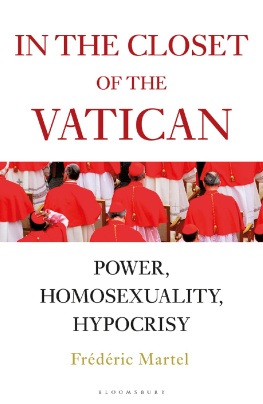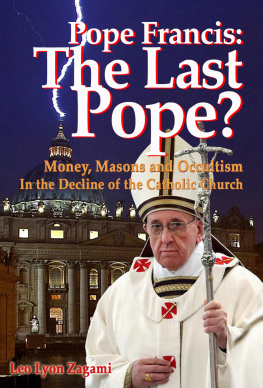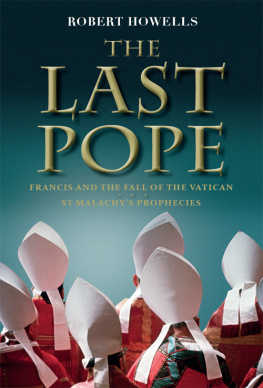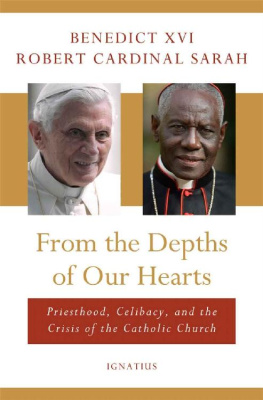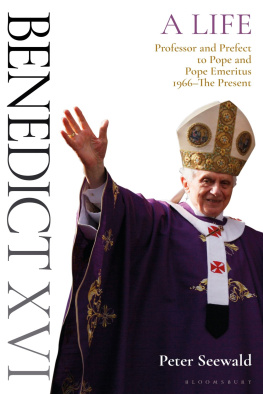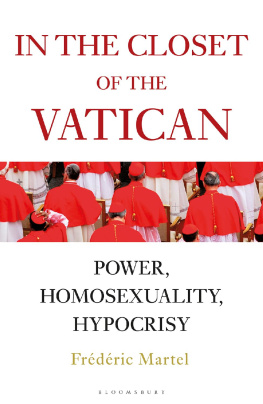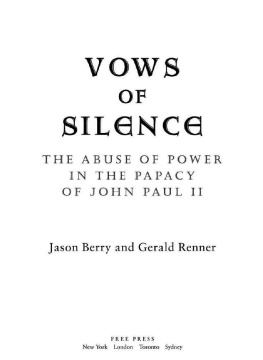IN THE CLOSET
OF THE
VATICAN
CONTENTS
In the Closet of the Vatican is being published simultaneously in eight languages and twenty countries by the following publishing houses and groups: Robert Laffont in France; Feltrinelli in Italy; Bloomsbury in the United Kingdom, the United States and Australia. It will also be published by Agora in Poland, Roca Editorial in Spain and Latin America, Balans in the Netherlands, Sextante Editora in Portugal, and in Romania. In France, where the book is published under the title Sodoma , the editor is Jean-Luc Barr. The English language editor is Robin Baird-Smith.
This book is based on a large number of sources. In the course of the investigation on the ground over a period of four years, almost 1,500 people have been questioned at the Vatican and in 30 countries: among them, 41 cardinals, 52 bishops and monsignori, 45 apostolic nuncios and foreign ambassadors. All of these interviews took place in person, none by telephone or email. To these first-hand sources we may add a vast bibliography of over a thousand references, books and articles. Finally, a team of 80 researchers, correspondents, advisers, fixers and translators was mobilized to complete research carried out in 30 countries.
All the sources and notes, the bibliography, the team of researchers, and three unpublished chapters too long to be included here, are collected in a 300-page document that can be accessed on the internet. This codex is available online here: www.sodoma.fr; updates will also be published with the hashtag #sodoma on the authors Facebook page: @fredericmartel; on the Instagram account: @martelfrederic and on the Twitter thread: @martelf
Hes of the parish, the priest whispers conspiratorially in my ear.
The first person who used that coded expression in front of me was an archbishop from the Roman Curia.
You know, hes very practising. Hes of the parish, he stressed in a low voice, talking to me about the morals of a famous Vatican cardinal, a former minister of John Paul II, who both of us knew well.
He added: And if I told you all the things I know, you wouldnt believe it!
And, of course, he talked.
We will come across this archbishop several times again in the course of this book, the first in a long series of priests who described the reality of which I was already aware, but which many people will see as a fiction. A fairy tale.
The problem is that if you tell the truth about the closet and the special friendships in the Vatican, people wont believe you. Theyll say its made up. Because here reality goes beyond fiction, I am told by a Franciscan friar, a man who has also worked and lived inside the Vatican for over thirty years.
But lots of people described this closet to me. Some of them were worried about what I was going to reveal. Others disclosed secrets to me, first in a whisper, then shortly afterwards, in a loud voice: actual scandals. Others, last of all, proved to be loquacious, excessively so, as if they had been waiting for so many years to come out of their silence. About forty cardinals and hundreds of bishops, monsignori, priests and nuncios (the popes ambassadors) agreed to meet me. Among them, alleged homosexuals, who were present in the Vatican every day, introduced me to their world of initiates.
Open secrets? Rumours? Evil gossip? Im like St Thomas: I need to check to believe. So I had to spend a long time investigating and living immersed in the Church. I installed myself in Rome, one week every month, regularly inside the Vatican, thanks to the hospitality of senior prelates who sometimes revealed that they too were part of the parish. And then I travelled across the world, through more than thirty countries, among the clergies of Latin America, Asia, the United States and the Middle East, to collect over a thousand statements. During that long investigation I spent more than a hundred and fifty nights a year reporting, away from home, away from Paris.
During the four years of that investigation, I never concealed my identity as a writer, a journalist or a researcher when approaching cardinals and priests, who sometimes proved to be unapproachable. All interviews were conducted under my real name, and my interlocutors had only to do a quick search on Google, Wikipedia, Facebook or Twitter to discover the details of my biography as a writer and reporter. Often, those priests, influential or otherwise, came on to me decorously, and some, with very little reluctance, more intensely. Its an occupational hazard!
Why did these men, who were used to being silent, agree to break the omert ? That is one of the mysteries of this book and my reason for writing it.
What they told me was unsayable for a long time. It would have been difficult to publish a book like this twenty or even only ten years ago. For a long time, the ways of the Lord remained, if I may say so, impenetrable. They are less so today because the resignation of Benedict XVI and Pope Franciss desire for reform have freed peoples tongues. Social networks, more courage on the part of the press, and countless ecclesiastical sex scandals have made it possible, and necessary, to reveal this secret today. So this book criticizes not the Church overall, but a very particular genre within the gay community; it tells the story of the majority of those in the College of Cardinals and the Vatican.
Many cardinals and priests who officiate at the Roman Curia, most of those who meet up in conclave beneath the frescoes of the Sistine Chapel painted by Michelangelo one of the most grandiose scenes of gay culture, peopled with virile bodies, surrounded by the Ignudi , those robust and beautiful naked young men share the same inclinations. They have a family resemblance. In fact, in an aside that had something of the disco-queen about it, another priest whispered to me in English: We are family!
Most of the monsignori who have spoken at the balcony of the Loggia of St Peters, between the pontificate of Paul VI and that of Francis, to deliver the sad announcement of the death of the pope or, with frank gaiety, to say Habemus papam !, share the same secret. Bianca!
Whether they are practising, homophile, initiates, unstraights, wordly, versatile, questioning, or simply in the closet, the world I am discovering, with its 50 shades of gay, is beyond comprehension. The intimate stories of these men who give an image of piety in public and lead a quite different life in private, so different from one another, present us with a complex intrigue to unravel. Never, perhaps, have the appearances of an institution been so deceptive; and equally deceptive are the pronouncements about celibacy and the vows of chastity that conceal a completely different reality.
The best-kept secret of the Vatican is no secret to Pope Francis. He knows his parish. Since arriving in Rome he has known that he is dealing with an organisation that is quite extraordinary in its way, and that isnt restricted, as people believed for a long time, to a few lost sheep. Its a system; and a huge herd. How many are there? It doesnt matter. Lets just say: they represent the great majority.
At first, of course, the pope was surprised by the extent of that malicious colony, its charming qualities and its unbearable shortcomings of which the French writer Marcel Proust wrote in his celebrated book Sodom and Gomorrah . But what Francis is unable to bear is not so much the homophilia that is so widespread, as the dizzying hypocrisy of those who advocate a rigid morality while at the same time having a companion, affairs and sometimes escorts. Thats why he spends so much time denouncing fake devotees, whited sepulchres and hypocrites. Francis has often denounced this duplicity in his morning homilies from Santa Marta. His phrase should be placed as an epigram at the start of this book: Behind rigidity something always lies hidden; in many cases, a double life.

